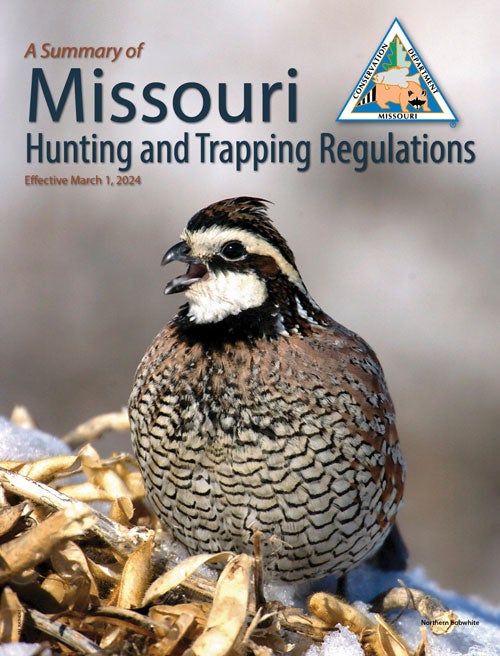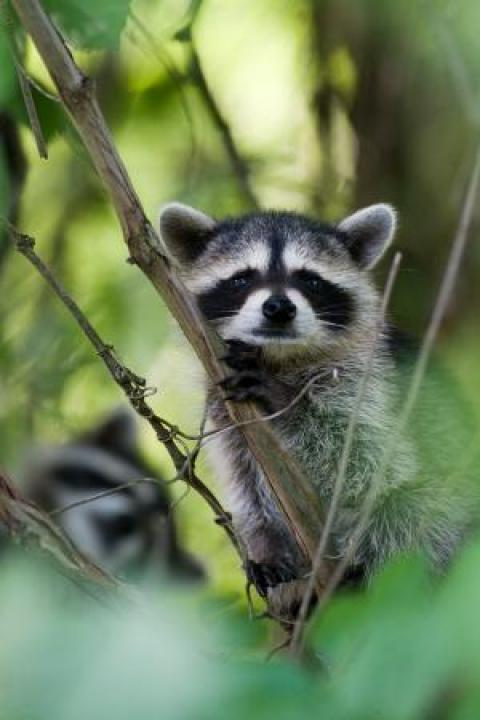About Raccoons
Raccoons are a medium-sized mammal with a noticeable black mask over the eyes and a ringed tail. Males and females look alike, although males are heavier. Raccoons typically weigh between 6 and 25 pounds. They prefer timbered habitat near water and are also common sights in urban and suburban areas. They make dens in hollow trees, caves, rocky crevices, and abandoned woodchuck burrows, among other places.
Raccoons are omnivorous, meaning that they eat both plant and animal foods including fruits, berries, grasses, corn, acorns, other nuts, as well as crayfish, clams, fish, snails, and a wide range of insects, frogs, snakes, bird eggs, mice, squirrels, and rabbits.
Hunting Methods
The most popular method for raccoon hunting in Missouri is with dogs. Hunters release hounds at night to search for the scent of a raccoon. Once the dogs find the scent, they begin to bark and that lets hunters know they have found a scent trail and gives an indication of which direction the animal is headed. In most cases, the dogs trail the raccoon to a tree where the animal is feeding. Usually, the raccoon is located among the branches by its reflective eyes. A small caliber rifle is most popular to take raccoons after being treed with dogs.
Another method of hunting raccoons is with the use of electronic game calls. Since this is a daytime hunting method, only an electronic call and small caliber rifle are needed. Successful use of this method involves locating probable den sights such as hollow trees, large brush piles, or abandoned buildings. Raccoon fighting sounds and the sounds that imitate young raccoons are effective during this time. The hunter hides in a location near the call where they can watch closely for animals approaching the call or coming out of the den locations.
Getting Started
Whether pursuing raccoons with dogs, using electronic calls, or trapping, success can be found nearly anywhere in Missouri where woods and water are in close proximity. Wooded stream corridors, large mature hedge rows and woody draws, and woodlots near agriculture feeds are promising places to start.
Basic Gear:
- A good dog, or access to a friend with a good dog
- Spotlight
- .22 caliber rifle
- Good footwear (hip waders if streams are present in the area you are hunting)
Tips and Tricks
- Hunt on warm afternoons in late winter following an extended period of cold. Raccoon hunting success is usually greater during these conditions.
- Bring along a GPS tracking device. This can save you a lot of time trying to find your way back to the truck and help keep you off property you may not have permission to hunt. Many hunters now use GPS tracking collars on their dogs as well.























